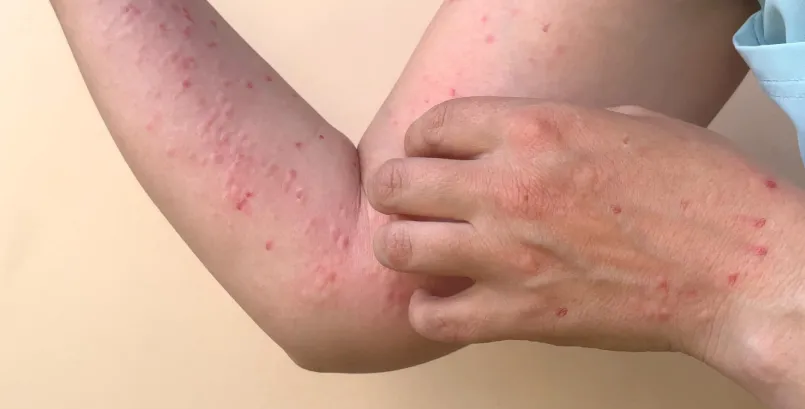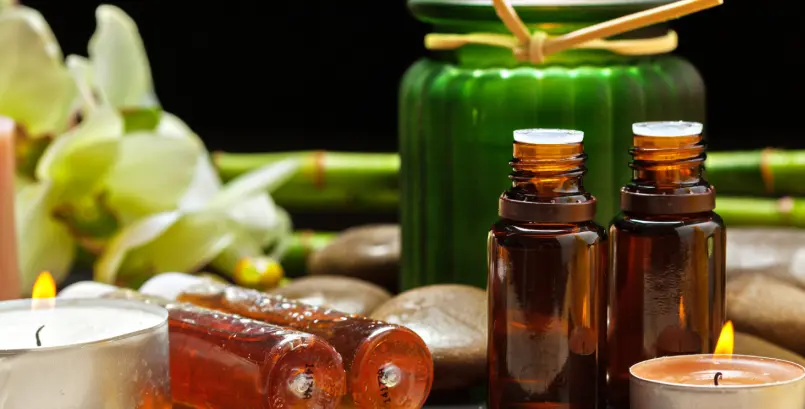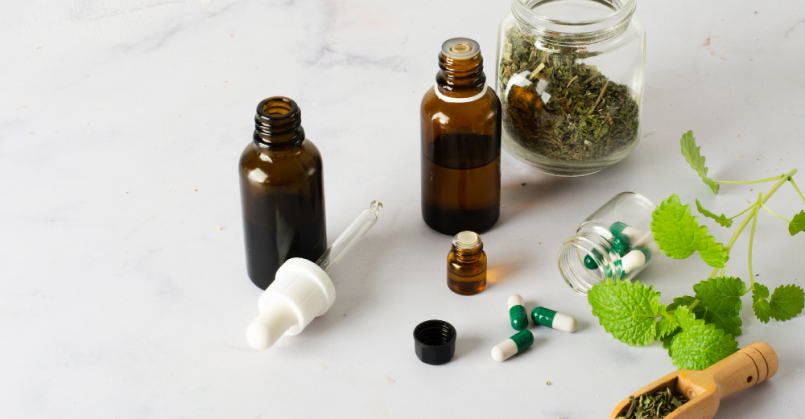
By Ayur wakeup | October 30, 2025
What are the early psoriasis symptoms and indicators that people frequently ignore? And its conventional treatments?
The chronic skin disorder known as psoriasis is much more than just surface irritation. Even though it is not communicable it can have a significant effect on one’s comfort and confidence. In order to fully comprehend psoriasis you must first identify the triggers that are concealed within your lifestyle stress levels and immune responses. This guide examines the actual causes of psoriasis, its symptoms and the standard therapies used to treat it.
Whether you’ve just received a diagnosis or are looking for better relief this blog will help you understand psoriasis from the inside out and point you in the direction of balance and healing.
Table Of Contents:
- What causes Psoriasis?
- What are the symptoms of Psoriasis?
- Common types of Psoriasis
- Types of Psoriasis and its conventional treatments
- FAQ
What Causes Psoriasis?
The skin condition psoriasis is immune-mediated. It happens when there is a problem with the immune system. Skin cells typically regenerate fully in a week or so. However this process proceeds much more quickly in psoriasis patients taking only three to four days. Old cells accumulate on the skin’s surface as a result producing white or white-gray scales. While there isn’t a single cause for this illness a few significant factors can cause or exacerbate it.
- Genetics: Psoriasis is more common in those who have a family history of the condition.
- Modifications to the immune system: The illness may start when the body’s defenses mistakenly target skin cells.
- Stress: Symptoms may worsen if there is excessive stress.
- Weather changes: Dry air and cold temperatures exacerbate symptoms.
- Medication: Antibiotics and certain blood pressure drugs can cause psoriasis.
- Lifestyle factors: Drinking alcohol, smoking and eating carelessly are also factors.
What Are The Symptoms Of Psoriasis?
- Usually found on the scalp, knees, hands, hips and back these patches are white or white-gray in color.
- The skin may feel tight and dry. A burning feeling and itching are possible at times.
- Certain skin areas may seem elevated and red. Occasionally these might bleed and have tiny bumps.
- Itchy white flaky patches may develop on the scalp. This is sometimes confused with dandruff.
- Nails may get pitted, brittle and discolored. Some people with psoriatic arthritis also have joint pain, stiffness and swelling.
Common Types Of Psoriasis
Plaque Psoriasis:
- The most prevalent kind of psoriasis is plaque psoriasis.
- This skin condition results in the formation of red elevated scaly skin patches called plaques.
- The scalp, knees, elbows and back are where it is most frequently found. Dry skin tightness and itching may result from this.
- The illness frequently recurs and flares up.
- Weakened immune systems stress and weather variations can exacerbate it.
- Not only can plaque psoriasis impact a patient’s skin appearance but it can also impact their everyday life and sense of self.
- Therefore Ayurvedic treatment and lifestyle changes are very effective in controlling it.
Scalp Psoriasis:
- One disorder that affects the scalp is called scalp psoriasis.
- It is typified by scaling redness, itching and white flaky flakes.
- Although it is a more serious condition it can occasionally look like dandruff.
- Psoriasis of the scalp can extend to the forehead, neck and behind the ears.
- Skin irritation and hair loss are possible symptoms for those with this condition.
- It can be brought on by stress changes in the weather, hormonal changes and immune system changes.
- Changes in lifestyle oil massage, natural shampoos and Ayurvedic treatments can all help manage psoriasis on the scalp.
Inverse Psoriasis:
- The exposed parts of the body such as the neck, groin, back armpits and underarms are typically where inverse psoriasis manifests.
- It results in scaly red skin patches that itch and become uncomfortable when you move or perspire.
- Compared to other forms of psoriasis the scales are thinner but they can still hurt and burn.
- This condition is more common in overweight people, people who wear tight clothing and people who sweat a lot.
- Ayurvedic treatments can calm the skin and effectively balance the body’s pitta dosha.
Guttate Psoriasis:
- Psoriasis that typically affects children and young adults is called guttate psoriasis.
- This illness causes tiny scaly red spots to show up on the back arms, legs and chest.
- The white powdery coating that covers the patches can occasionally cause itching and burning.
- It usually starts following a streptococcal infection or sore throat.
- It can also get worse due to a compromised immune system stress and changes in the weather.
- By taking blood purification medications and using Ayurvedic treatments to balance the body’s doshas guttate psoriasis can be successfully managed.
Psoriasis Knee Symptoms:
- One of the most frequently psoriasis-affected areas is the knees.
- Red thick plaques develop on the knees in this condition which results in pain burning and itching.
- The dry cracked skin makes it uncomfortable to sit on or walk on.
- Skin trauma from stress and cold temperatures can make the condition worse.
- Ayurvedic treatment can help achieve dosha balance and skin nourishment.
Nail Psoriasis:
- Psoriasis that affects the nails is referred to as nail psoriasis.
- This results in symptoms like nail thickening, cracking pitting and discoloration.
- The nails may occasionally thicken and break.
- In addition to affecting the hands and feet, nail psoriasis can have a detrimental impact on everyday activities and self-confidence.
- Through the use of natural herbal remedies medicinal oils and blood purification ayurvedic treatment can help restore the health of the nails.
Types Of Psoriasis And Its Conventional Treatments
| Type of Psoriasis | Conventional Treatments |
|---|---|
| Inverse Psoriasis | Mild corticosteroid creams or calcineurin inhibitors (like tacrolimus) Keeping the area dry and clean Systemic treatments |
| Guttate Psoriasis | Phototherapy Topical steroids Antibiotics |
| Psoriasis Knee Symptoms | Topical ointments Phototherapy Physical therapy or anti-inflammatory medications |
| Nail Psoriasis | Topical steroids or vitamin D creams Intralesional steroid injections Systemic biologic medications |
| Scalp Psoriasis | Medicated shampoos Topical corticosteroid solutions Light therapy or oral medications Gentle hair care |
| Plaque Psoriasis | Topical corticosteroids and vitamin D analogs Phototherapy (UVB light) Systemic medications Regular moisturizing creams |
FAQ
What is psoriasis?
A chronic skin condition called psoriasis causes skin cells to proliferate quickly and produce thick dry white scales. The most typical places to find it are the knees, scalp nails etc.
Which are the primary reasons for psoriasis?
The primary cause of psoriasis is an immune system-related condition. The illness may also worsen as a result of genetic psychological stress, weather variations, certain drugs and infections.
Which are the primary signs of psoriasis?
Dry scales, thinning skin peeling of the scalp, brittle and discolored nails and red spots on the skin are the main symptoms.


